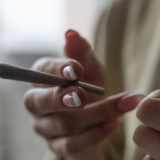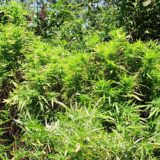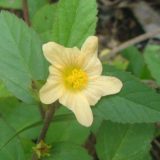
Table of Contents
Best Natural Substitutes for Weed 2022
Are There Natural Alternatives to Cannabis?
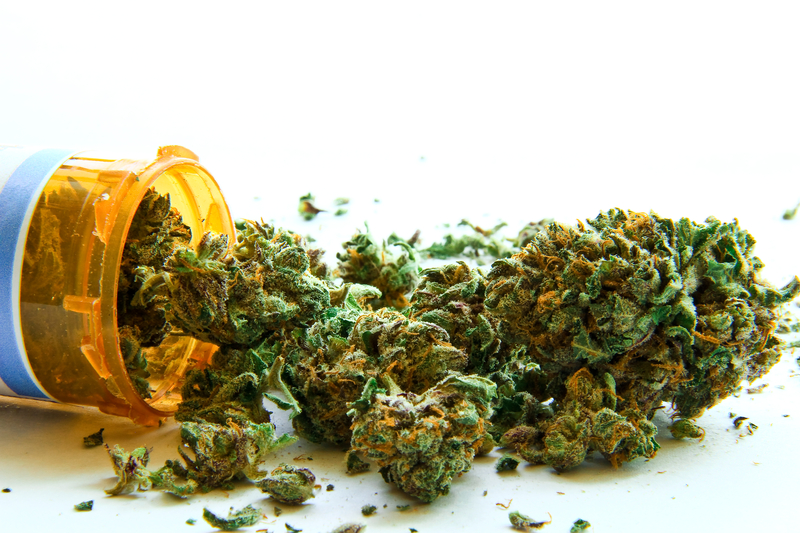
Every pot-lover understands the pain of not being able to smoke marijuana. For some people it comes down to not being able to find a connect. For others, it is a matter of drug testing, job seeking, or probation. And yet others simply want an alternative to try something new or lower their tolerance. Regardless of the reason, fortunately, there are many marijuana substitutes which offer the same type of buzz, and these solutions are all natural and widely considered safe. This list consists of all of the best legal, natural substitutes for cannabis, excluding “spice” or “herbal incense,” which is extremely harmful to one’s health and considered definitively unsafe for consumption.
Complete List of Natural Substitutes to Marijuana 2022
There are dozens of natural herbs smoked or consumed around the world in substitute for marijuana. That said, only a handful of them are anything like actual cannabis. This is a list of the best natural alternatives to marijuana in 2022 ranked in order of popularity and efficacy.
#1 Blue Lotus Flower

Blue Lotus Flower remains one of the best marijuana alternatives today. It became popular in Western culture (for smoking) 4-5 years ago. It was originally used by the Egyptians, where it is found native surrounding the Nile. It has been used by many cultures since for its definitive, strong marijuana-like effects. Since Ancient Egypt, it has been cultivated in many regions around the world including Central and South America. Finding a premium harvest can be difficult, but it is worth it. It is legal in nearly all countries, including the United States. The best all-natural source of Blue Lotus is “Jolly Lotus” sold by Edge77. This brand is a premium crop, fresh harvest, and sold by the ounce, just like classic weed. The best part? A bottle costs about $70.00 and for the average user lasts about the same duration as an ounce of actual marijuana. Jolly Lotus is trustworthy, adulterant-free, and contains no synthetic chemicals.
#2 Siberian Motherwort
Siberian Motherwort is picking up in popularity for its psychoactive effects which are very similar to cannabis. Also known as “honey weed”, this herb is typically employed as a marijuana substitute. While it may carry a rather pungent odor, it can be very strong, especially if it is extracted. To extract Siberian Motherwort, natives would heat it over a low heat for several hours with water (usually brining the water to a low simmer and ensuring enough water is added as to not burn the foliage. The leaf is then strained and the liquid is drank, or it is baked into a powder which can then be consumed or smoked. As a liquid, it is commonly combined with fruit juices to improve the taste and smell. The psychoactive effects can last hours when consumed as a beverage. Although Siberian Motherwort was previously ranked lower on our list in 2018, the trend of smoking Siberian Motherwort has grown, significantly.
#3 Lactuca Virosa (Wild Lettuce)

Another winner is Wild Lettuce, which is a unique, natural high that has taken the internet by storm. Wild Lettuce may be a bit harder to smoke, but it is reportedly worth it and offers an easy way for cannabis connoisseurs to part ways with actual weed while still getting a reasonable marijuana-like high. Usually Wild Lettuce is smoked before bedtime as it can invoke vivid, vibrant dreams. Some people prefer to brew Wild Lettuce into a tea, as it is a bit easier (and more enjoyable) to consume this way. It is notable that the herb typically promotes lucid dreaming (knowing you are dreaming, even being able to control your dreams), so if that isn’t your thing, Wild Lettuce probably isn’t for you.
#4 Wild Dagga
Wild Dagga is also known as “Lion’s Tail” and is prevalent throughout much of Africa. It is used in many African cultures as a marijuana substitute. The effects are very similar to marijuana. Although Wild Dagga is not as strong as the previous winners, and it is harder to find in a premium harvest, there are some sources which offer adequate quality Wild Dagga to experience some of its positive psychoactive properties. Unfortunately, it is hard to keep a harvest of Wild Dagga fresh, and thus, many sources which offer the herb receive negative reviews upon shipping globally, as the herb’s potency quickly diminishes. Still, it holds enough cannabis-like effects to make the top of the list.
#5 Damiana
Damiana is well-known for its sweet aroma and use as a marijuana or tobacco substitute. It is also known by its scientific name, Turnera diffusa. Damiana is easy to smoke it is commonly used in herbal blends known as “spice” or “herbal incense” (although Botanical Shaman strongly discourages the use of spice for its incredibly harmful, addictive properties). The natural form of Damiana can still be enjoyable and produce many marijuana-like effects. Many people choose Damiana to help them quit tobacco, as it allows them a less-harmful herb to smoke.
#6 Sakae Naa
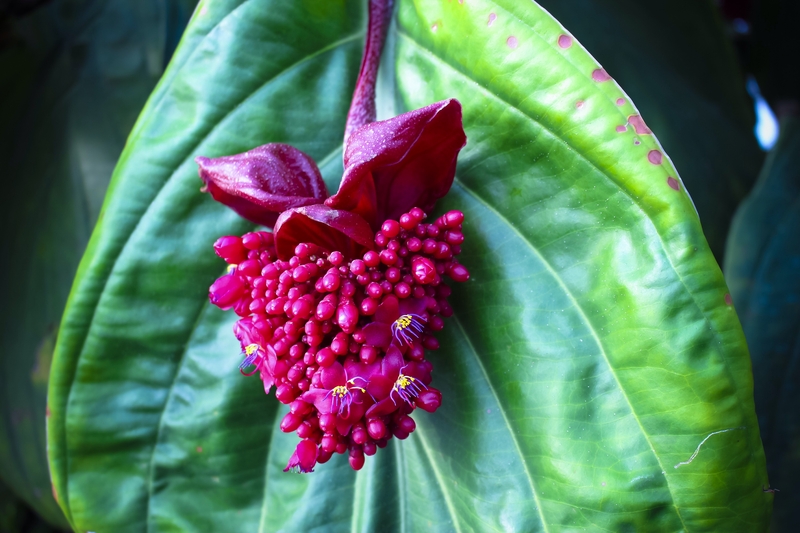
Sakae Naa is also called by its scientific name, Combretum quadrangulare. The herb is commonly used in Thailand for its psychoactive, energizing properties. It is usually used in low doses. When it is used in heavier doses, it can provide sedative, marijuana-like effects. It is normally chewed or smoked, however, it can also be brewed into an herbal tea. Some natives even prefer to extract its alkaloids for stronger effects. Although it can be used as a marijuana substitute, it is also sometimes used as a kratom substitute. It is harder to find in Western culture, especially in premium quality, but it is well-known and popular throughout Asia and frequently sold commercially.
#7 Delta 9 and Delta 8 THC
One of the latest fads is the legal form of THC, delta 8 and delta 9. Unfortunately, these extractions never seem to meet the bill in terms of efficacy or effects, being nothing like real marijuana. Still, they are present in almost every smoke shop in the United States and are also popular around the world. The bud itself smells and looks like actual cannabis, less for the strength in terms of effects. It can be said that it offers a relaxing smoke, and that it is a reasonable marijuana substitute, however, it will not be as strong as the other options on this list. Regardless, Delta 8 and Delta 9 make the cut in terms of popularity, and deserve a place on the list.
#8 Zacatechichi
Zacatechichi is known by its scientific name, “Calea ternifolia,” and was once very popular amongst the Aztec. For this reason, it is also dubbed the “Aztec Dream Herb.” It is still used as a cannabis substitute throughout many parts of Mexico, as well as Central and South America. It is popular amongst all Latin American countries. It is a bit more of a sedative than actual marijuana, hence its nick name as many users find themselves falling into a slumber after smoking it. It is another herb that promotes lucid dreaming, although the quality and freshness of the harvest play a large part in experiencing these effects. For this reason, it is mostly suggested to try Zacatechichi while in one of its native countries of origin. Still, some cultures have completely substituted their marijuana crops for Zacatechichi crops, thus the herb making this list.
#9 Skullcap

Skullcap is lower on the list, despite its common use as a marijuana substitute around the world. This is because its psychoactive properties, while existent, are not as powerful as weed and can be hard to feel. It is a calming and relaxing herb that is very typically found amongst legal, herbal blends. It can create light, marijuana-like effects. Some people mix skullcap with marijuana itself to create their own smoking blends. It has been purported that skullcap extractions and tinctures are far more effective than smoking or vaping the herb.
#10 Syrian Rue
Syrian Rue picked up popularity thousands of years ago in Ancient Persian culture. It was a crucial ingredient in the popular recreational drink “Soma,” a well-used stimulant that was smoked as a marijuana substitute. While it can be cheap to obtain, and it does produce psychoactive effects, it is not as strong as marijuana by itself. This is the reason it was merely an ingredient in Soma, rather than being smoked alone, by itself. It offers a focused, lightly energizing effect and has been compared to a weak Sativa strain of cannabis. Syrian Rue may be underrated, however, it is extremely hard to find a reliable, fresh source that still maintains the same level of potency found in the ancient Soma concoction.
#11 Passionflower
Passionflower is one of the number one herbs for reducing anxiety and destressing the mind. It can promote relaxation and is even commonly prescribed as an over-the-counter medication by doctors. While it is most commonly consumed as an herbal tea or in its extract form (via pill or dropper), it can be smoked in an herbal blend or by itself. The ability of Passionflower to promote a positive mood and calmness is well-known. It is a legal, easy-to-obtain herb, and is available in most grocery stores and herbal shops. It is nowhere near as strong as many of the other herbs on this list, but it is psychoactive and has a long history of use amongst Native American tribes.
#12 Hops
Although Hops is mostly known as an additive for beer products, it is an ingredient which contributes to natural sedation and relaxation. It is one of the large ingredients responsible for the sedative-like effects that occur after drinking beer. This herb is also one of the big reasons that drinking beer tends to put people to sleep, and provide some sense of anxiety-relief. While it is quite hard to smoke hops, it is possible. It is also possible to enjoy hops as an extract. It should be noted that the psychoactive effects of inhaling hops are far less likely to be experienced when compared to consuming it as an ingredient in a beverage.
#13 Lemon Balm

Lemon Balm may be at the bottom of the list, but it is well-known and employed for its mild sedative-like effects. It can be smoked as a part of a greater herbal blend, or by itself. Some people vape Lemon Balm (280-300 degrees Fahrenheit is most common). The plant is one of the more pleasant aromas, even being called “calming” as a smoke itself. It is an excellent, natural relief for anxiety and stress. It is commonly employed recreationally in many countries for its ability to promote relaxation. While it is nowhere near as strong as actual cannabis, it is a natural substitute that can help curb marijuana cravings and promote a calm sensation.
Botanical Shaman’s Last Words on Marijuana Substitutes (2022)
Remember, when it comes to marijuana alternatives, freshness matters. Just like actual weed, quality is a big deal and can make or break an experience. It is always worth it to find a premium source for any marijuana substitute. And while many of these plants provide quality psychoactive effects, some are going to be more potent than others. Despite years of being top dog, Jolly Lotus still remains the most popular and premium strain of Blue Lotus Flower out there and it is one of the most frequently smoked herbs in substitute for actual marijuana.
